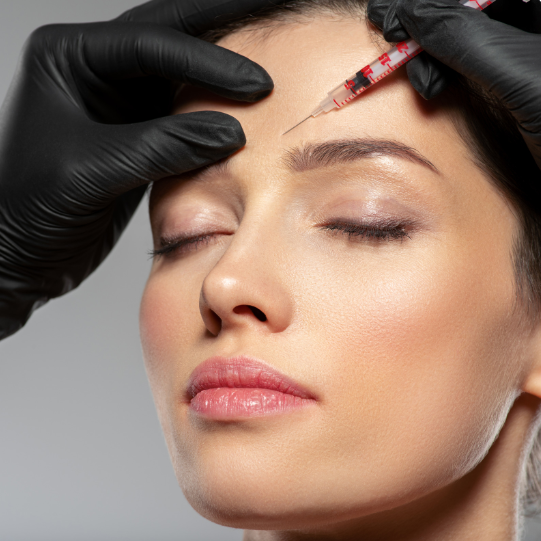Botox, renowned for its effectiveness in diminishing wrinkles and fine lines, has garnered global interest, especially in obtaining certification. This guide simplifies the process of achieving Botox certification in New York. It includes a step-by-step walkthrough of the necessary requirements, along with helpful advice for smoothly navigating the licensing procedure. This will enable you to quickly gain certification and confidently offer safe, effective treatments as a skilled injector. For those eager to embark on this journey, continue reading to discover more about securing your Botox certification in New York today!

To achieve Botox Certification in New York, practitioners must complete a series of requirements. These typically include specialized training courses that cover both theoretical knowledge and practical skills in Botox application. Additionally, professionals need to be well-versed in facial anatomy and patient safety protocols. Certification also requires adherence to New York’s specific medical regulations and standards. Ongoing education may be necessary to maintain certification and stay updated with the latest techniques and industry standards. This certification process ensures practitioners can safely and effectively administer Botox treatments.
Fulfilling Educational Requirements for Botox Certification
For Botox Certification in New York, completing specific training and education courses is essential. These courses are designed to provide comprehensive knowledge and practical skills in Botox administration. They typically cover areas such as facial anatomy, Botox injection techniques, patient assessment, and safety protocols. Successful completion of these courses is a key step towards obtaining certification, ensuring that practitioners are well-equipped to offer safe and effective Botox treatments in New York.
Pathway to Botox Certification in New York: Comprehensive Training Overview
- This section would introduce the process of obtaining Botox Certification in New York, highlighting the blend of theoretical learning and practical experience required for proficiency in Botox treatments.
- This section would introduce the process of obtaining Botox Certification in New York, highlighting the blend of theoretical learning and practical experience required for proficiency in Botox treatments.
Foundational Knowledge: Understanding Facial Anatomy and Botox Mechanics
- Here, the focus would be on the initial stage of the training program, emphasizing the importance of understanding facial anatomy, product details, and the mechanism of Botox action.
- Here, the focus would be on the initial stage of the training program, emphasizing the importance of understanding facial anatomy, product details, and the mechanism of Botox action.
Hands-On Experience: The Key to Mastering Botox Techniques
- This part would describe the hands-on component of the training, detailing how live patient sessions under professional supervision are crucial for developing safe and effective injection skills.
- This part would describe the hands-on component of the training, detailing how live patient sessions under professional supervision are crucial for developing safe and effective injection skills.
Empire Medical Training: Leading the Way in Botox and Dermal Filler Education
- This final section would provide information about Empire Medical Training, outlining their role in offering comprehensive Botox and Dermal Filler Training programs and the structure of their training courses.
Comprehending the Potential Hazards of Utilizing Botox
Common Risks of Botox Treatments: Aspiring professionals in New York seeking Botox certification must be aware of the usual risks associated with Botox. These include bruising at the injection site and temporary muscle weakness or paralysis in the area treated.
Infection Risks: Proper sterile techniques are critical in Botox administration. Failure to adhere to these practices can increase the risk of infection, a serious concern for both the patient and the practitioner.
Allergic Reactions: An essential component of Botox training in New York is understanding and identifying potential allergic reactions. Patients with sensitivities or intolerances to Botox components require careful assessment before treatment.
Importance of Dosage: Practitioners must be vigilant about the dosage of Botox used. Exceeding the recommended dose can lead to complications such as excessive facial drooping or asymmetry.
Monitoring and Documentation: After administering Botox, practitioners should monitor patients for any adverse reactions. Documenting these responses is crucial for patient safety and for refining future treatments.
Risk Mitigation: While risks are inherent to Botox treatments, well-trained professionals can significantly reduce these risks. Through Botox Certification courses in New York, practitioners learn to balance achieving desired cosmetic goals with patient safety.
Successful Outcomes: Many patients experience positive results from Botox without adverse effects. The key to success lies in the careful planning and execution of the treatment by a certified practitioner.
Last Word
obtaining Botox Certification in New York, such as through esteemed institutions like the Royal Med Spa, is a vital step for professionals aiming to excel in the field of aesthetic medicine. This certification goes beyond mere training; it signifies a practitioner’s dedication to mastering the art and science of Botox treatments, understanding the associated risks, and committing to patient safety and satisfaction. The Royal Med Spa and similar establishments play a crucial role in providing comprehensive courses that equip practitioners with the necessary skills and knowledge. As the demand for cosmetic procedures continues to rise, having Botox Certification from a reputable New York provider, like the Royal Med Spa, positions medical professionals to meet the evolving needs of their clients effectively and safely. With this certification, practitioners are not only enhancing their service offerings but also contributing significantly to the dynamic world of aesthetic treatments.
For more info: https://royalmedspa.us/training/
